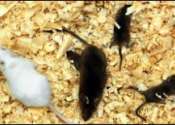UNL biochemist probes protein for disease clues
(PhysOrg.com) -- Scientists believe they have discovered a common link between such disparate diseases as Parkinson's disease and some types of cancer. Studying these links could lead to advances in combating these and other ...




